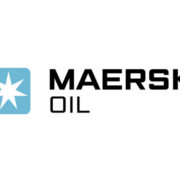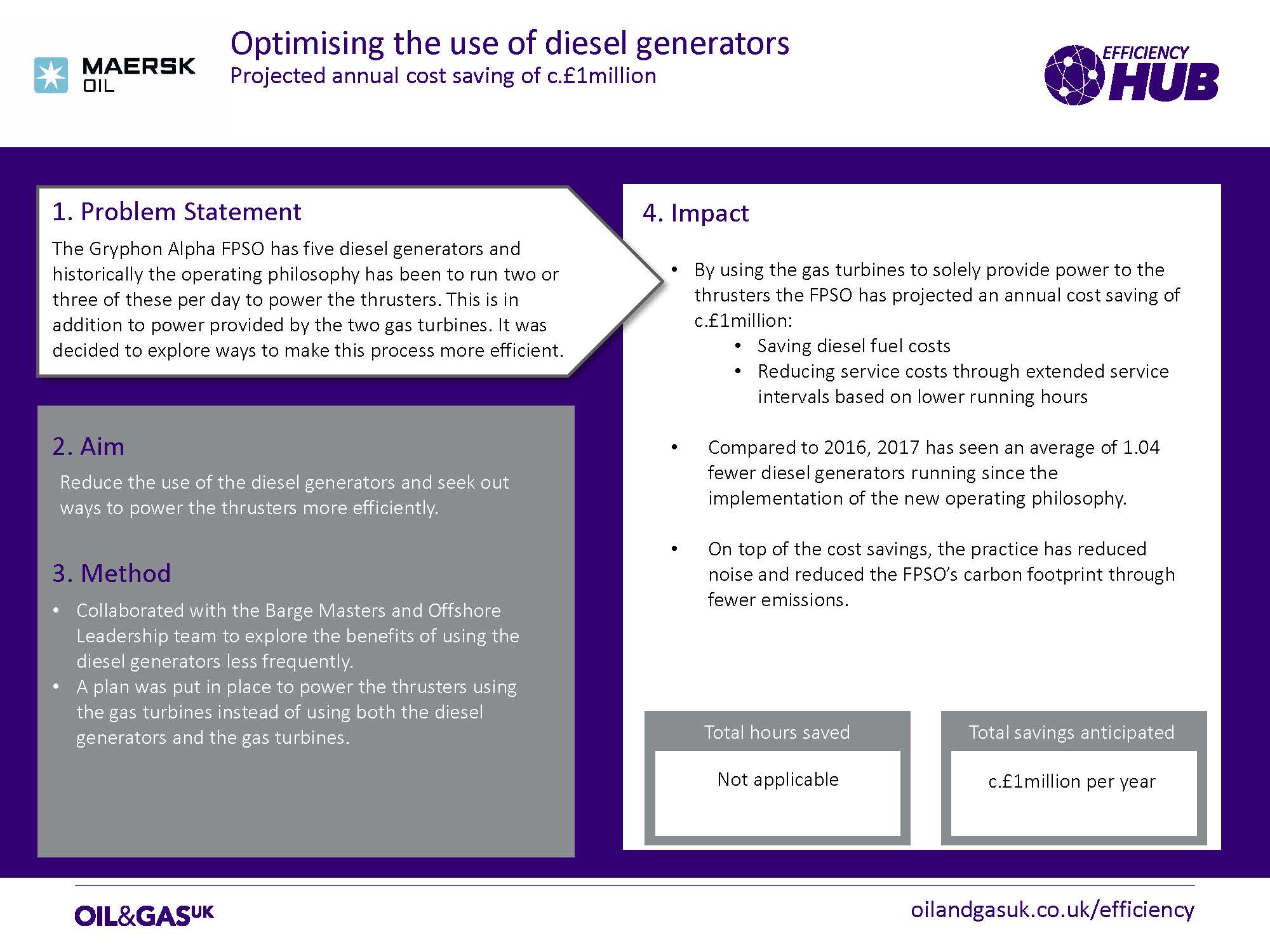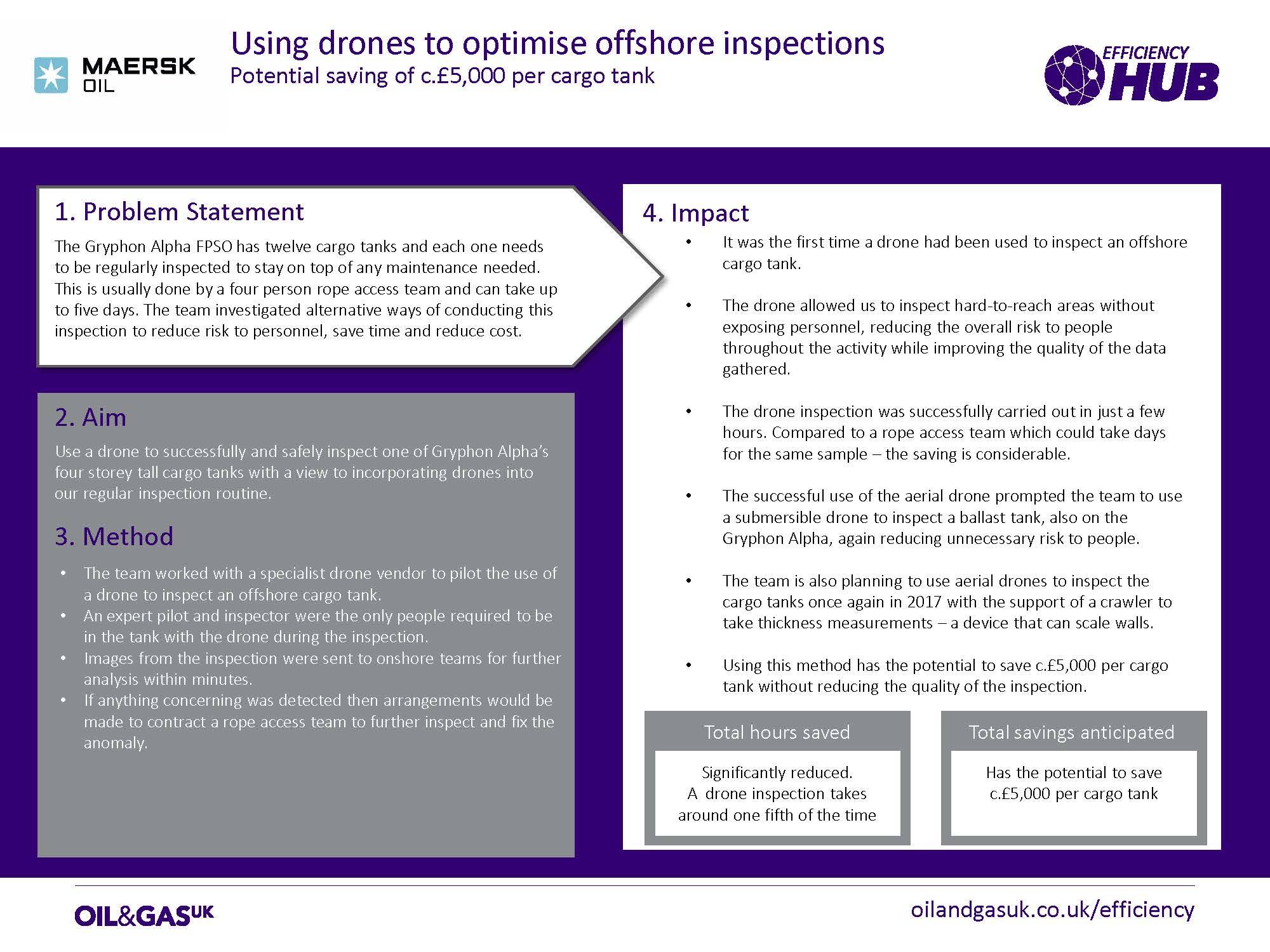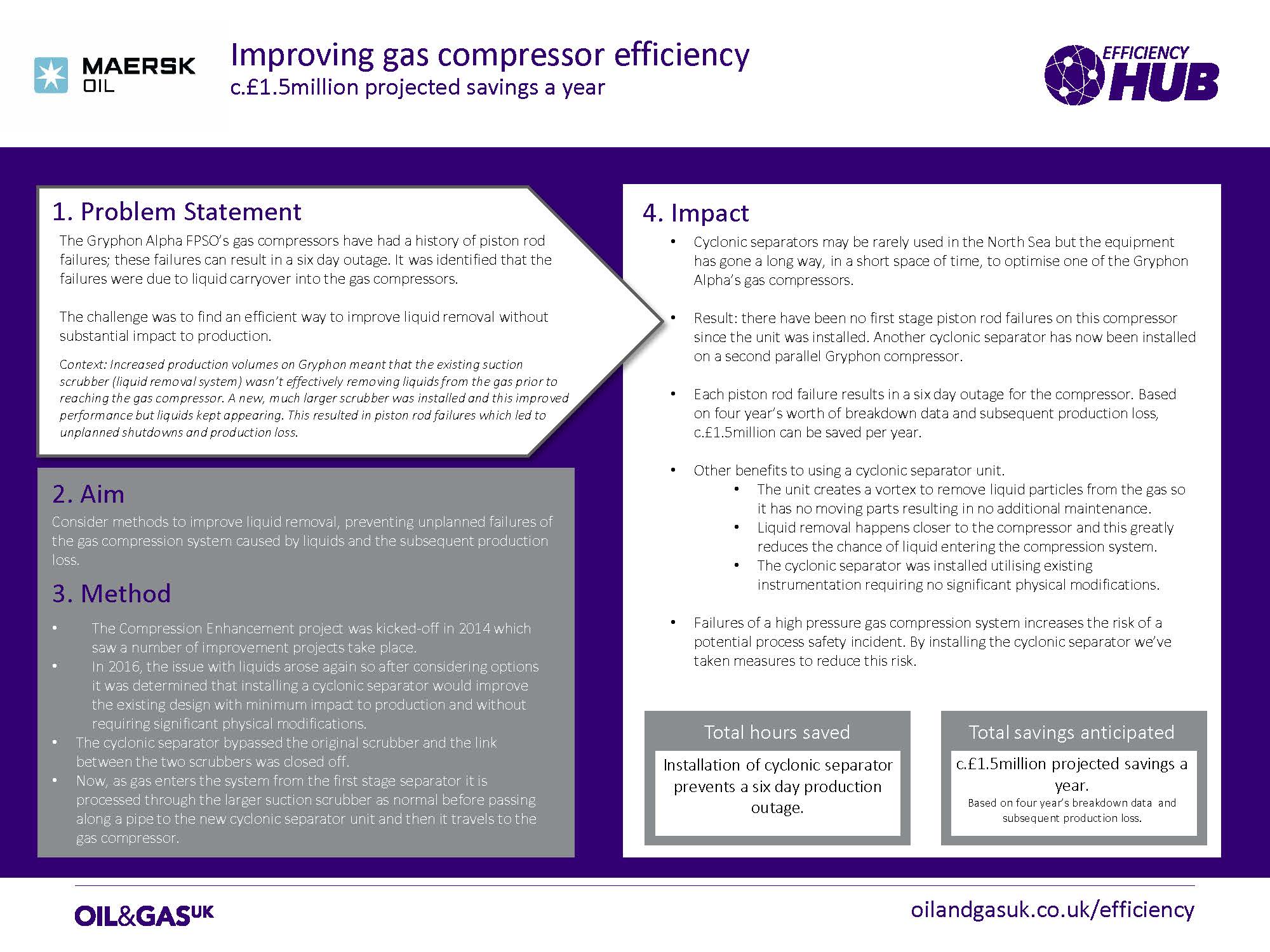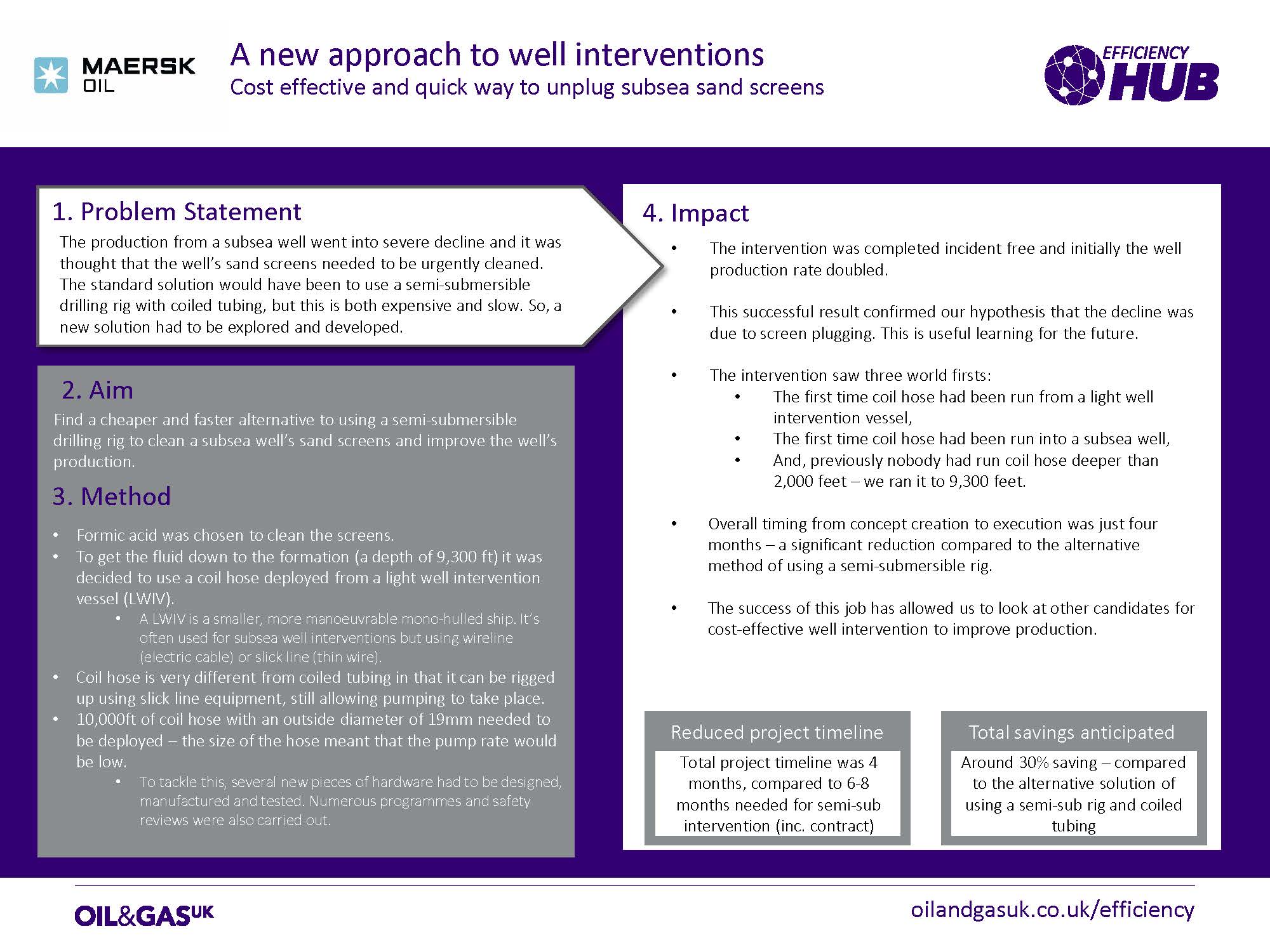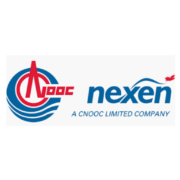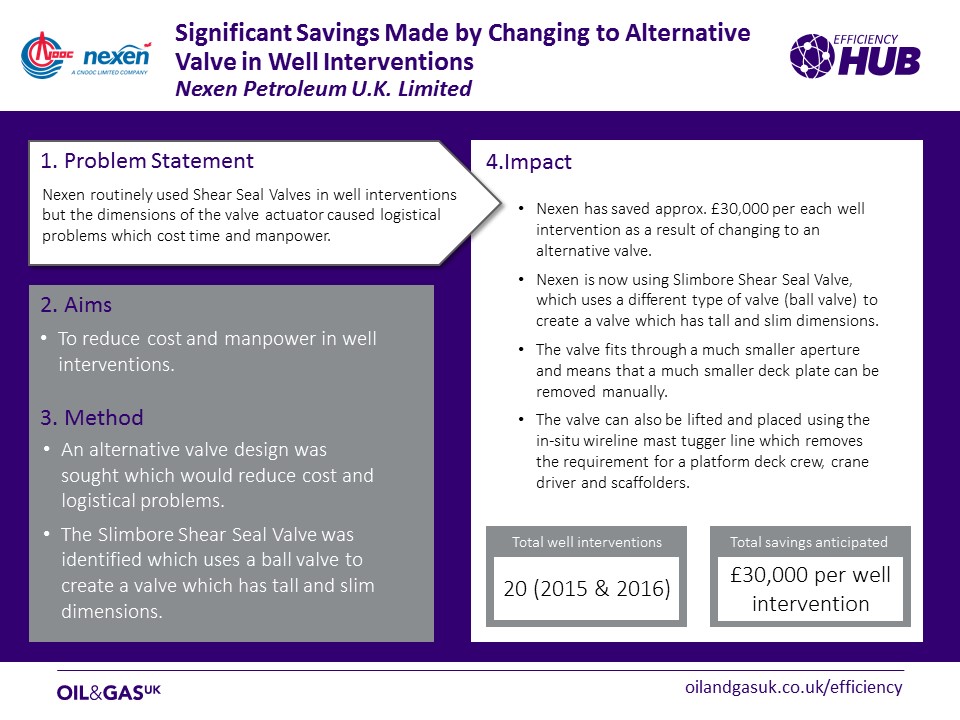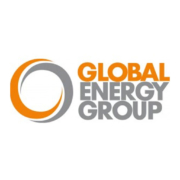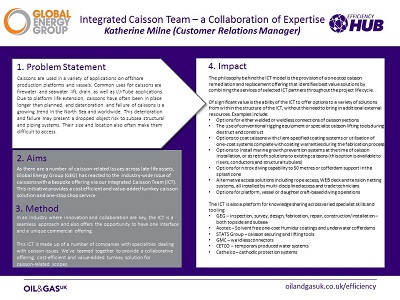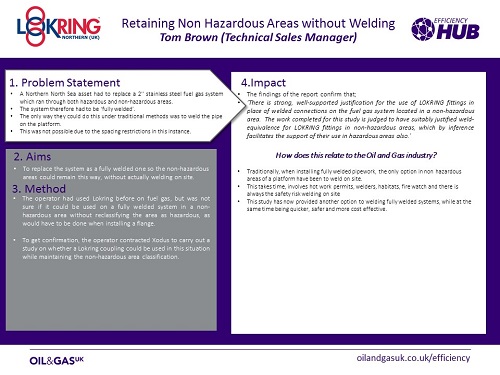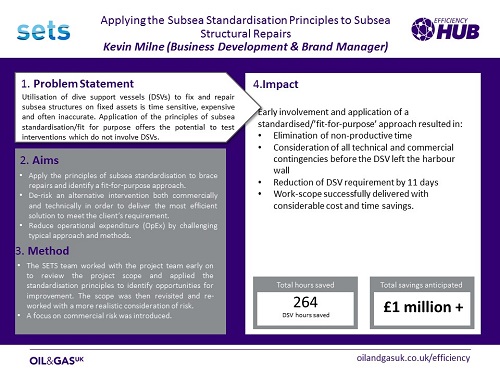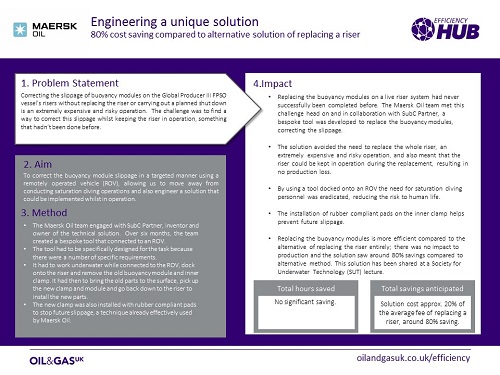Problem Statement
The Gryphon Alpha FPSO’s gas compressors have had a history of piston rod failures; these failures can result in a six day outage. It was identified that the failures were due to liquid carryover into the gas compressors. The challenge was to find an efficient way to improve liquid removal without substantial impact to production. Context: Increased production volumes on Gryphon meant that the existing suction scrubber (liquid removal system) wasn’t effectively removing liquids from the gas prior to reaching the gas compressor. A new, much larger scrubber was installed and this improved performance but liquids kept appearing. This resulted in piston rod failures which led to unplanned shutdowns and production loss.
Aim
Consider methods to improve liquid removal, preventing unplanned failures of the gas compression system caused by liquids and the subsequent production loss.
Method
The Compression Enhancement project was kicked-off in 2014 which saw a number of improvement projects take place.
In 2016, the issue with liquids arose again so after considering options it was determined that installing a cyclonic separator would improve the existing design with minimum impact to production and without requiring significant physical modifications.
The cyclonic separator bypassed the original scrubber and the link between the two scrubbers was closed off.
Now, as gas enters the system from the first stage separator it is processed through the larger suction scrubber as normal before passing along a pipe to the new cyclonic separator unit and then it travels to the gas compressor
Impact
Cyclonic separators may be rarely used in the North Sea but the equipment has gone a long way, in a short space of time, to optimise one of the Gryphon Alpha’s gas compressors.
Result: there have been no first stage piston rod failures on this compressor since the unit was installed. Another cyclonic separator has now been installed on a second parallel Gryphon compressor.
Each piston rod failure results in a six day outage for the compressor. Based on four year’s worth of breakdown data and subsequent production loss, c.£1.5million can be saved per year.
Other benefits to using a cyclonic separator unit.
The unit creates a vortex to remove liquid particles from the gas so it has no moving parts resulting in no additional maintenance.
Liquid removal happens closer to the compressor and this greatly reduces the chance of liquid entering the compression system.
The cyclonic separator was installed utilising existing instrumentation requiring no significant physical modifications.
Failures of a high pressure gas compression system increases the risk of a potential process safety incident. By installing the cyclonic separator we’ve taken measures to reduce this risk.
Total hours saved: Installation of cyclonic separator prevents a six day production outage.
Total savings anticipated: c.£1.5million projected savings a year. Based on four year’s breakdown data and subsequent production loss.
Click on the image above to download the case study.

